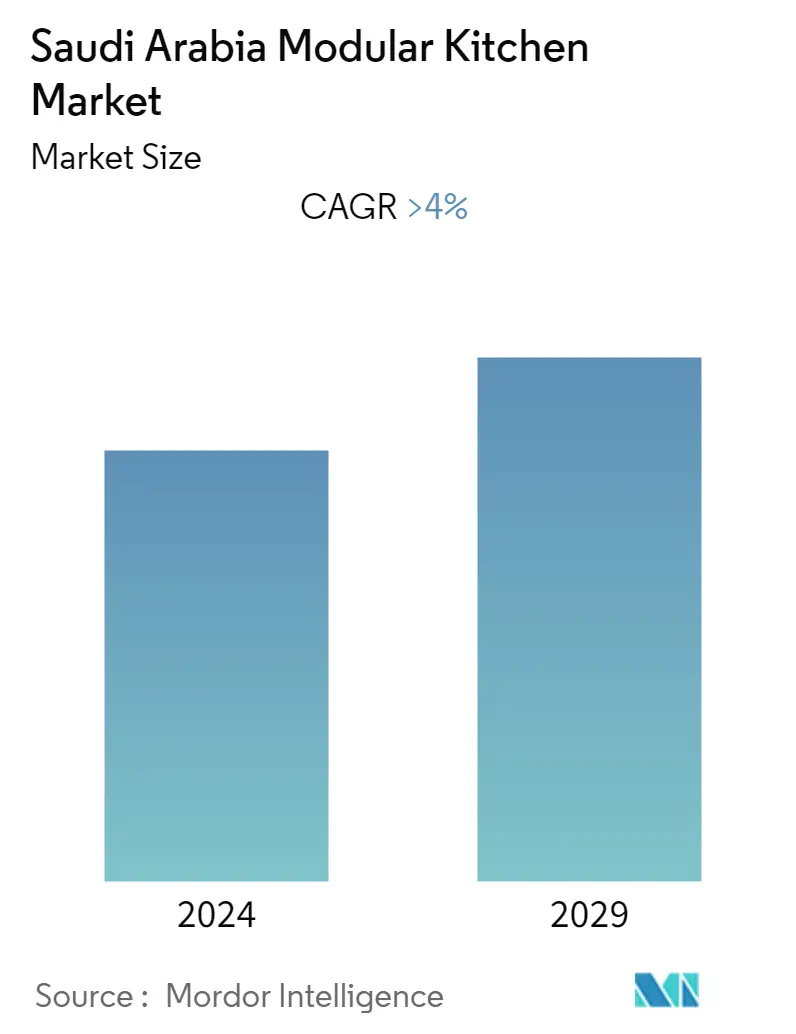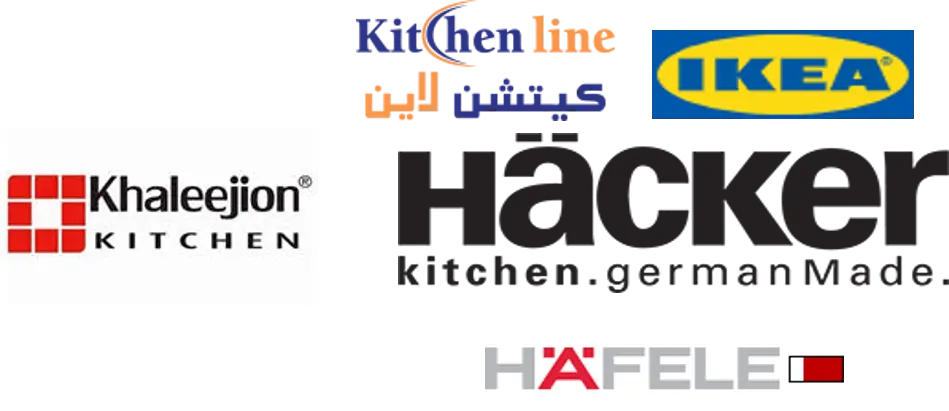
| Study Period | 2020 - 2029 |
| Base Year For Estimation | 2023 |
| Forecast Data Period | 2024 - 2029 |
| Historical Data Period | 2020 - 2022 |
| CAGR | 4.00 % |
Major Players
*Disclaimer: Major Players sorted in no particular order |
Saudi Arabia Modular Kitchen Market Analysis
The kitchen is a frequently used room in the house is considered a hub for the home. As families are getting smaller and people live in small apartments there is a growing need for efficiently utilizing the space, here comes the demand for modular kitchens. Modular kitchens comprise different kinds of cabinets and fixtures put together in a systematic manner to facilitate the effective use of kitchen spaces.
Modular kitchens help the storage of kitchen utensils and make the kitchen look moderns by enhancing infrastructure. The modular kitchens efficiently utilize the space and increase the space efficiently and are beneficial for individuals who look for convenience, speed, and ease while working in the kitchen. Summer season is popular among customers for designing kitchens in the KSA as they have various occasions such as weddings and the beginning of Ramadan. Majorly kitchen items in Saudi Arabia are imported from other countries with prices determined by the overall design of the kitchen.
Saudi Arabia Modular Kitchen Industry Segmentation
The report provides a deep-dive analysis of Saudi Arabia's Modular Kitchen Market. It also focuses on key segments in the market with developmental trends, opportunities in the market with market size, and numbers Competitive landscape of major players in the market is analyzed thoroughly with detailed company profiles.
| Floor Cabinet & Wall Cabinets |
| Tall Storage Cabinets |
| Others |
| Offline (Contractors, Builders, etc.) |
| Online |
| Residential |
| Commercial |
Saudi Arabia Modular Kitchen Market Size Summary
The modular kitchen market in Saudi Arabia is experiencing significant growth, driven by the increasing need for space-efficient solutions in smaller living environments. As families become smaller and urban living spaces shrink, modular kitchens offer a practical solution by maximizing storage and enhancing the kitchen's modern aesthetic. These kitchens are characterized by their systematic arrangement of cabinets and fixtures, which not only optimize space but also provide convenience and ease of use. The demand for modular kitchens is particularly high during the summer months, coinciding with events like weddings and Ramadan, when home renovations are popular. The market is largely influenced by imported products, with key suppliers including China, Vietnam, Turkey, Malaysia, and Italy, which cater to the preference for bespoke and custom-designed kitchen solutions.
The Saudi Arabian modular kitchen market is marked by a blend of online and offline shopping experiences. While e-commerce is on the rise, with platforms like Amazon, Danube, and Ikea facilitating online purchases, traditional brick-and-mortar stores remain popular, especially among older generations who prefer in-person consultations and showroom visits. The market is fragmented, with numerous local and international players, including notable Italian and German manufacturers, contributing to its diversity. Despite the challenges posed by shipping logistics for products manufactured outside the Kingdom, the market continues to thrive, supported by a growing number of internet users and the influence of contractors on kitchen design choices.
Saudi Arabia Modular Kitchen Market Size - Table of Contents
1. MARKET DYNAMICS
- 1.1 Market Overview
-
1.2 Market Dynamics
- 1.2.1 Drivers
- 1.2.2 Restraints / Challenges
- 1.2.3 Opportunities
-
1.3 Porter's Five Forces Analysis
- 1.3.1 Threat of New Entrants
- 1.3.2 Bargaining Power of Buyers/Consumers
- 1.3.3 Bargaining Power of Suppliers
- 1.3.4 Threat of Substitute Products
- 1.3.5 Intensity of Competitive Rivalry
- 1.4 Insights on Modular Kitchen Trends in the Market
- 1.5 Insights on Different Designs of Modular Kitchen in the Market
- 1.6 Insights on Impact of COVID-19 on the Market
- 1.7 Insights on Technological Innovations in the Market
- 1.8 Insights on Government Regulations on the Market
2. MARKET SEGMENTATION
-
2.1 By Product
- 2.1.1 Floor Cabinet & Wall Cabinets
- 2.1.2 Tall Storage Cabinets
- 2.1.3 Others
-
2.2 By Distribution Channel
- 2.2.1 Offline (Contractors, Builders, etc.)
- 2.2.2 Online
-
2.3 By End-User
- 2.3.1 Residential
- 2.3.2 Commercial
Saudi Arabia Modular Kitchen Market Research FAQs
What is the current Saudi Arabia Modular Kitchen Market size?
The Saudi Arabia Modular Kitchen Market is projected to register a CAGR of greater than 4% during the forecast period (2025-2030)
Who are the key players in Saudi Arabia Modular Kitchen Market?
Saudi Kitchen Line Company, Snaidero, AlKhaleejion Kitchens, Inter IKEA Systems B.V. and Pedini are the major companies operating in the Saudi Arabia Modular Kitchen Market.


